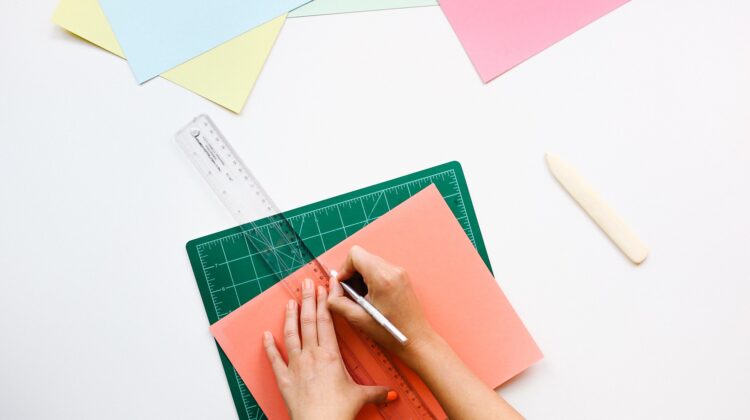
Geometry is the branch of mathematics concerning the operation and characteristics of points, lines, shapes, surfaces, and solids. These can all be incorporated into higher dimensional entities that require their dimensions to be meticulously calculated. It is one of the oldest branches of math, mainly because it helps to solve the relationships and properties of many real-life structures.
Geometry converges lots of other math disciplines in order to be fully encompassed, such as calculus and linear algebra. It exercises core modalities of math when combined with arithmetic. As a subcategory, geometry is realistically used in physics, engineering, architecture, and more. It is important to teach kids to implement geometry, especially at a young age. It will help young minds to fully comprehend the spatial relationship they exist in. They can figure out the size of buildings or dictate the size of certain objects they possess. Thus, heightening their spatial awareness.
Ways to Strengthen Geometry Skills for Students
Students typically have very individualized ways of approaching their learning. Not every mind retains or works the same. So, cultivating a varied environment is KEY for success. A good starting point is to integrate geometry at a YOUNG age. Start with the more simplistic aspects of geometry, like identifying shapes and types of lines. You can even include these in art, crafting, playtime, and more. As the maturity progresses alongside the difficulty of geometry, you can find shortcuts and hands-on activities students of many ages can enjoy. The importance of including fun into the learning is to lessen the severity or intensity of the learning so the students are in a much more comfortable state when learning.
Here are some ways to strengthen geometry skills both in and out of the classroom:
Shapes, Shapes, Shapes

Familiarizing students with ALL kinds of shapes is super important in enhancing the functionality of geometry. What’s essential to emulate about each shape is the individual number of sides, unique features, and why they require a particular equation. Additionally, you can incorporate shapes into pretty much any visual exercise, and even have students point out what geometrical shapes they encounter in the classroom.
Acronyms for the WIN
There are SO many intricacies in geometry, and some children may find it difficult to keep up. They need digestible, to-the-point, concrete modalities to fully retain the geometrical content. Because there are so many shapes that require specified equations and calculations, you can brainstorm fun yet easy acronyms for them to recall! A great starting point is to use words and phrases prevalent to the knowledge. Also, find allusions that many kids resonate with for acronym inspiration.
Encourage VISUAL Memory
Because geometry emphasizes lots of visual representation to embody spatial relationships, it’s a great idea to include visual review for optimal retention. You can use puzzles or detailed shape imagery depending on the age of the students being taught. Consistently presenting visual aids will subliminally integrate into the student’s realm of knowledge.
Map the World
Math is taught to be applied to real-world scenarios, right? Geometry is fully assimilated into daily life whether it’s in a classroom or at home. A great way to fuse the real world with the education at hand is to point out various geometric functions in our world! You can teach this through fun facts about the construction of historical landmarks, or diagrams explaining the Earth’s dimension. Similarly, you can help students gain practical knowledge by identifying basic 2D and 3D shapes in the home.
2D vs. 3D
Geometry is a subject that popularized the usefulness of 3D shapes, which require much more arduous mathematical methods. To fully encapsulate the difference between 2D and 3D figures, create a fun activity to build dimensional shapes! You can utilize toothpicks and marshmallows (or playdough for food allergies) to construct varying shapes or planes.
Hands-On Crafts

Many students learn best when they exercise hands-on play. A great way to wire and configure the understanding of math as a whole is to use the senses. Make time for the student(s) to use play dough, popsicle sticks, drawing, painting, and more. How can you include geometry? Instruct the student to formulate shapes you provide them (by name or trait-based hints)
Incorporate Geoboards
Geoboards are a particular hands-on modality GREAT for communicating the malleability of geometry as a discipline. A geoboard is a physical board with half-drilled nails to introduce plane geometry, perimeter, maybe even area. By using string or rubber bands around the nails, you can mold many shapes! Similar to the hands-on crafts, provide different shapes for the student to showcase their understanding of. Likewise, you can take it one step further by asking the student to calculate the perimeter or area of the shape by measuring its dimensions.
Lesson + Content Reviews
As always, review is one of the best tools for strengthening math skills. By repeating the same information in varying ways, you’re introducing consistency in the work which allows the student to acquire the most amount of understanding they can. You can assist the students through worksheets, collaborative group work, fun classroom review games, online math games, khan academy, and study guides! Find what works best for the student(s) you encounter or work with.
Hope you found the article useful. Please leave your valuable inputs in the comments.
Leave a Reply